Signs Your Dog Doesn’t Respect You [6 CLUES To Monitor]
Dogs are often considered to be not just pets, but also cherished members of our families. As such, we expect them to reciprocate the love and respect we give them. However, dogs are pack animals, and sometimes they exhibit behaviors that can make us question whether they truly respect us or not.
In this article, we will explore subtle signs that may indicate your furry friend doesn’t necessarily see you as the leader of the pack.
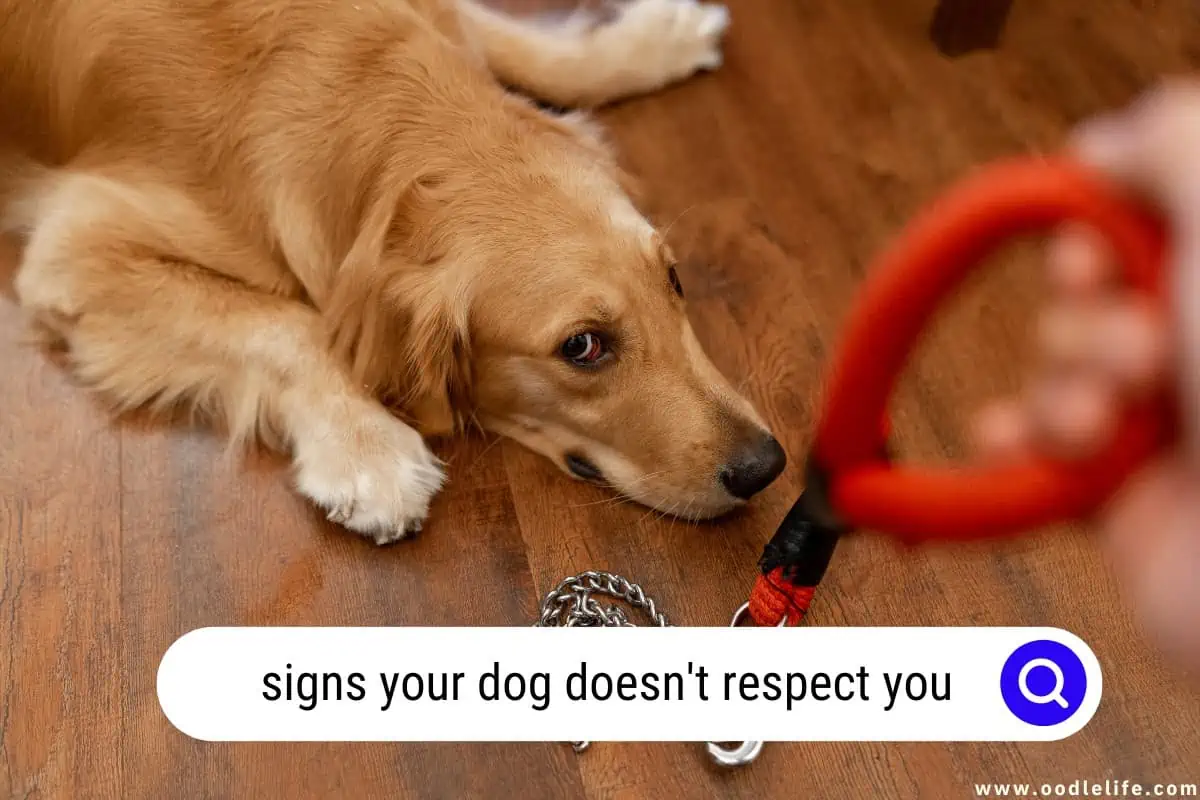
It’s important to observe your dog’s behavior and body language to better understand their relationship with you. While some might dismiss certain actions as innocent quirks, they might actually be indicators that your dog is testing the boundaries of your authority. To help you uncover the truth, we’ll dive into the telltale signs of a dog that lacks respect for their human counterpart.
So, strap yourselves in for a fur-filled journey as we navigate through the canine world, giving you the inside scoop on what your beloved pooch might really think about you. Spoiler alert: it’s not always rainbows and belly rubs!
Signs of Respect in Dog Behavior
Eye Contact and Body Language
A respectful dog maintains appropriate eye contact with their owner. While prolonged eye contact can be viewed as a challenge, a polite glance communicates trust and attention. Observe your dog’s body language as well.
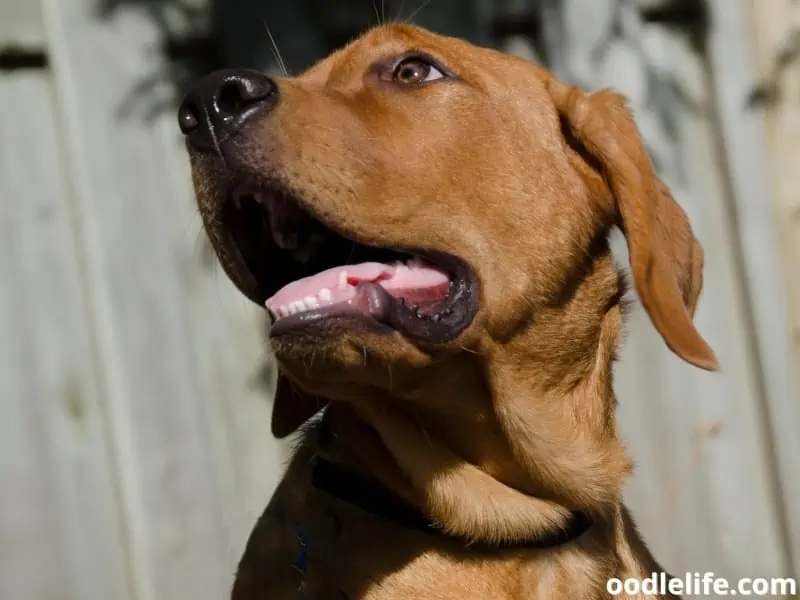
A dog that respects you will often have a relaxed posture and follow your lead. For example, if you move to a different part of the room, they may follow suit or position themselves accordingly.
Wagging Tail and Calmness
Have you ever walked into a room and been greeted by your dog’s happy, wagging tail? This is a positive sign of respect and affection. A calm and composed dog generally indicates they feel secure in your presence and trust your leadership.
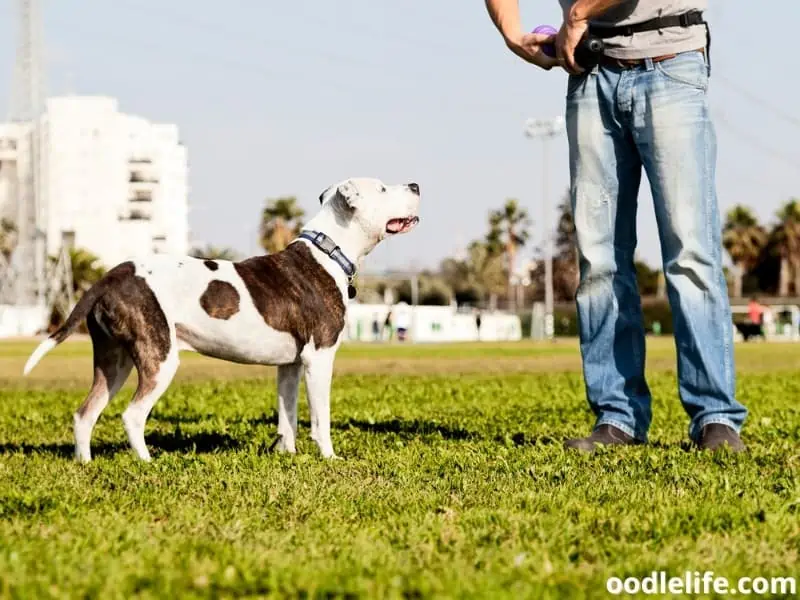
How’s that for tail-wagging diplomacy?
Listening to Commands
When dogs respect their owners, they tend to listen to commands more attentively. Next time you ask your furry friend to sit, stay, or fetch, pay attention to their response. If they eagerly obey, you’ve got a respectful pup on your hands.
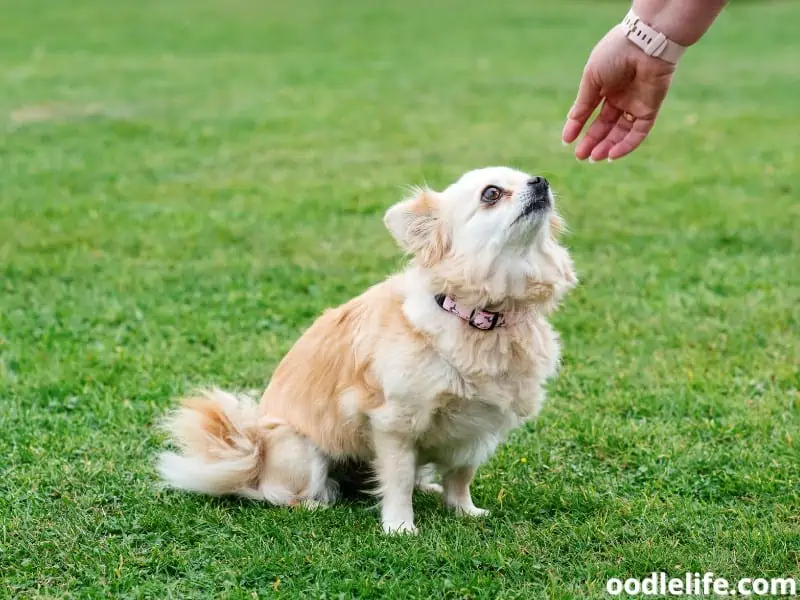
Not only do they respect your authority, but they’re also easier to train – they learn faster, adapting to the expectations you’ve set for them.
Now that you’ve got a handy understanding of what to look for, why not play detective with your canine companion? After all, we all appreciate a little respect, even in the dog-eat-dog world. Just remember, your dog’s respect is earned, not given – so give them the love, care, and attention they deserve to cultivate a strong, respectful relationship.
Happy observations!
Establishing Boundaries and Leadership
Dogs are pack animals, and understanding their hierarchy is key to addressing respect issues between you and your furry friend. Becoming the pack leader and maintaining a calm, assertive demeanor is essential to navigating this relationship and establishing good boundaries. In this section, we’ll discuss setting rules, boundaries, and limitations, consistency in training, and feeding and food-related behaviors to help you gain your dog’s respect.
Setting Rules, Boundaries, and Limitations
Think of your home as your dog’s kingdom, and you’re their kindly, yet firm ruler. Your dog needs to know its “throne” within this environment. One way to establish this is through seating arrangements and guiding your dog to and away from specific areas.

For instance, some dog owners might keep their pups off the furniture to avoid the mindset of being king of the castle and bossing you around.
It’s essential to establish rules, boundaries, and limitations to help build trust, obedience, and respect in your dog’s eyes. Remember, while your dog might be part of the family, they think in terms of a pack and their place in the pecking order.
Consistency in Training
All dog breeds can benefit from consistent training, clear guidance, and appropriate rewards. Taking a steadfast approach to training helps dogs understand your expectations and how to follow them. When your dog recognizes a confident, consistent, and knowledgeable leader, they’ll be more inclined to respect and adhere to the rules set out by you, the alpha.
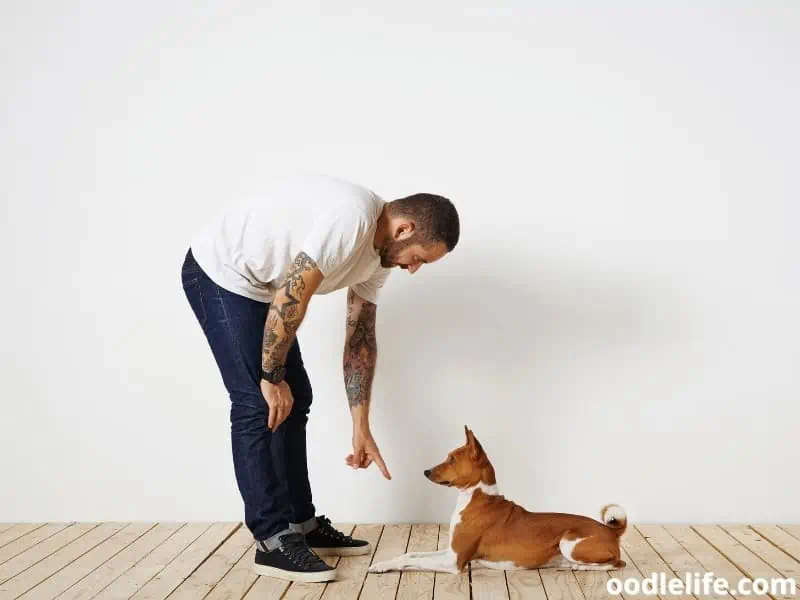
Story time: Oscar, a loving yet stubborn Dachshund, was convinced he was the boss of the household. But one summer evening, after refusing to come when called, his owner decided to enforce a consistent obedience training schedule. They practiced daily, using assertive but gentle methods, rewards, and repetition.
Soon, our little Oscar turned into a well-behaved, respectful dog that even stopped trying to steal food from dinner plates.
Feeding and Food-Related Behaviors
Feeding time is often regarded as an ideal opportunity to establish dominance and reinforce your position as the pack leader. Starting with simple habits such as making sure you eat before your dog, and controlling access to food can help cement the hierarchy within the home.
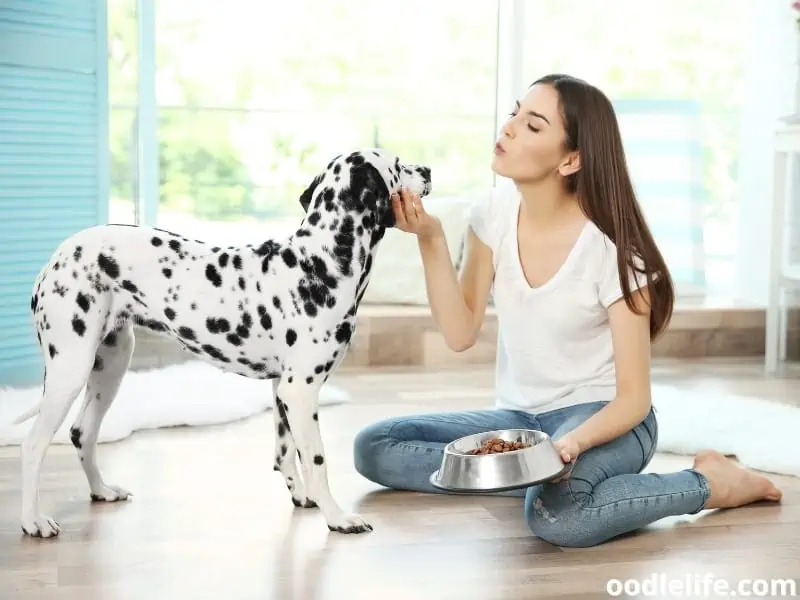
Adding some ground rules, such as making your dog wait patiently for their meal or asking them to perform a task like sitting before being rewarded with food, can help emphasize your role as the provider and leader. Canine table manners extend to public places too, and a well-behaved dog shows respect for both you and the environment.
In conclusion, establishing strong boundaries and leadership is essential to earning your dog’s respect. By keeping a consistent, focused, and loving approach, you can set a clear and comfortable framework for both of you to enjoy your lives together. And hey, when your dog finally waits by the door for you to go first, you’ll know you’ve become the top dog they’ll follow to the moon and back.
Walking and Obedience on Leash
Proper Leash Manners
One of the first indicators of whether your dog respects you is their behavior on the leash. A dog that respects you will walk calmly by your side, keeping the leash loose and maintaining a close distance to you. They won’t drag you, desperately trying to sniff every patch of grass or forge ahead as if they’re the pack leader.
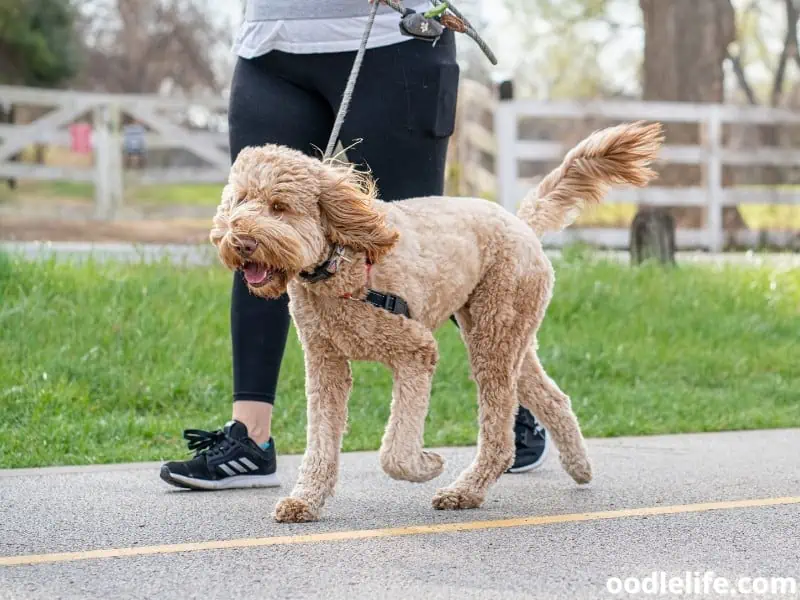
Remember, pack leaders lead the way and offer protection, so if your dog constantly wants to be ahead of you, they might not see you as their leader.
Dog’s Response to Directions
Another sign of your dog’s respect can be seen in their response to your directions. For example, when you ask your dog to stop, sit, or change direction during a walk, they should be able to follow your command promptly. A lack of respect might be evident if your dog blatantly ignores your instructions, or if any attempt at giving commands results in a game of canine charades as you dance around, yelling and attempting to enforce your directions.
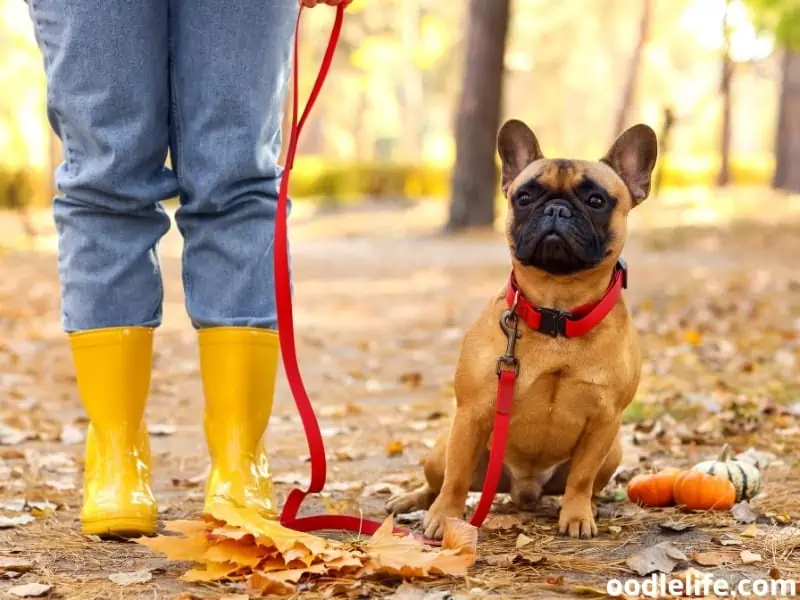
Calmness in Public Places
In public places, your dog’s behavior can also be a reflection of their respect for you. If your dog remains calm and collected, even when they encounter other dogs, people, or distractions, this is a clear indication of their trust in your ability to protect and guide them. On the other hand, a dog that is constantly excited, pulling on the leash, and behaving in an unruly manner suggests they don’t place much importance on your role as their leader.
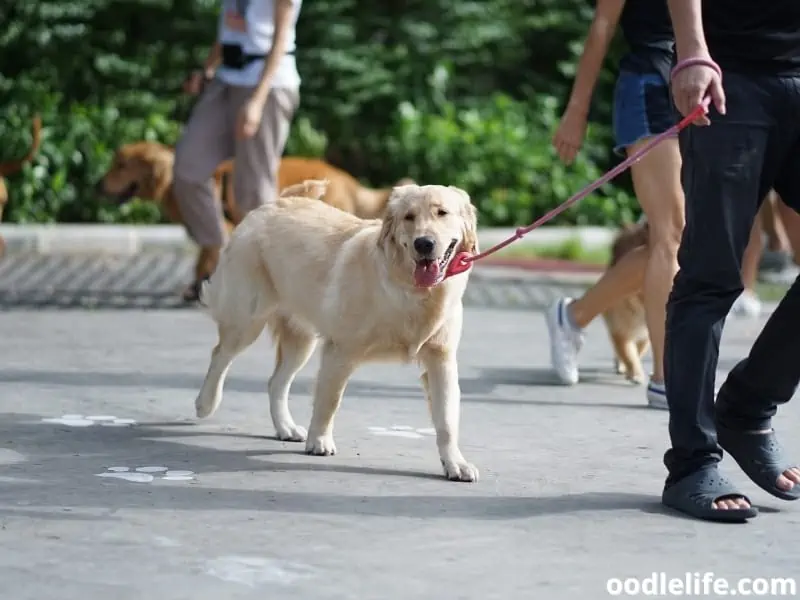
In summary, a respectful dog will display proper leash manners, promptly respond to your directions, and remain calm in public places. By ensuring your dog sees you as the pack leader, you can foster a strong, trusting relationship that ensures peaceful and enjoyable walks for both you and your furry friend.
Understanding Your Dog’s Needs and Personality
Cat Person vs. Sweetie Pie Dog
Every dog is an individual; some may have a “cat person” personality, while others are the “sweetie pie” type. A cat person dog prefers to be self-reliant and independent, while a sweetie pie dog craves attention and affection. Regardless of personality, understanding your dog’s needs and temperament is vital for a happy, well-behaved pet.
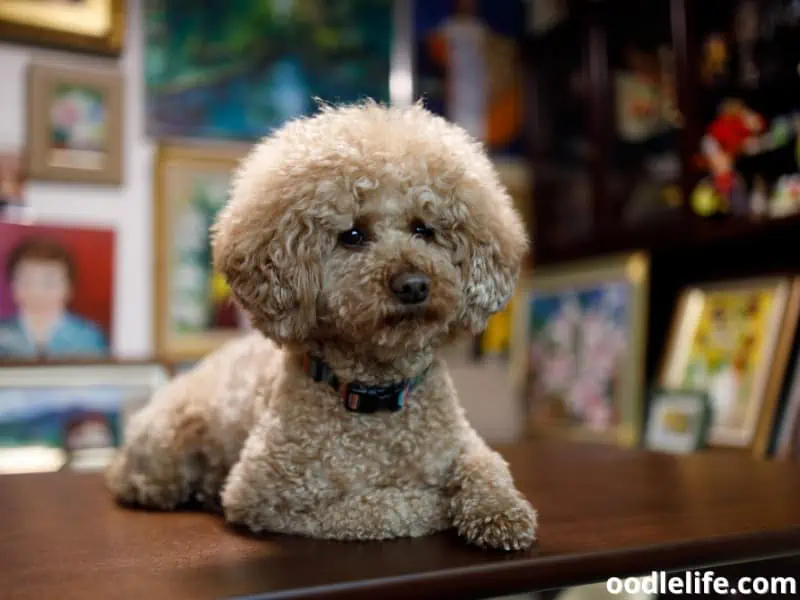
For example, a cat person puppy may be more aloof, like a feline, whereas a sweetie pie dog always seeks attention and love. It’s essential to respect their preferences and ensure they have the proper care, training, and environment.
Identifying Control Issues
Control issues can arise if your new pooch does not respect your authority or if the dog is too dominant. Acknowledging and addressing these issues is crucial for both the owner and the pet.

Signs that your dog might have control issues include:
- Ignoring your commands
- Overly assertive behavior
- Displaying aggression
To properly manage control issues, it’s important to establish boundaries and rules from the beginning. Consistent, positive reinforcement and training are essential in ensuring a well-behaved and respectful dog. Train your dog with patience, and never be afraid to consult professional help if the control issues persist.
Remember, every dog is unique. It’s essential to acknowledge and cater to their individual needs and personalities. Establishing mutual respect and understanding will lead to a happy, fulfilling relationship between you and your furry friend.
Developing a Trusting and Respectful Relationship
Building a Bond with Your Puppy
When you get a new furry family member, building a bond is the first crucial step of establishing a trusting and respectful relationship with them. Start the bonding process by spending quality time together. Play with your puppy using various interactive toys, like tug-of-war ropes or fetching balls.
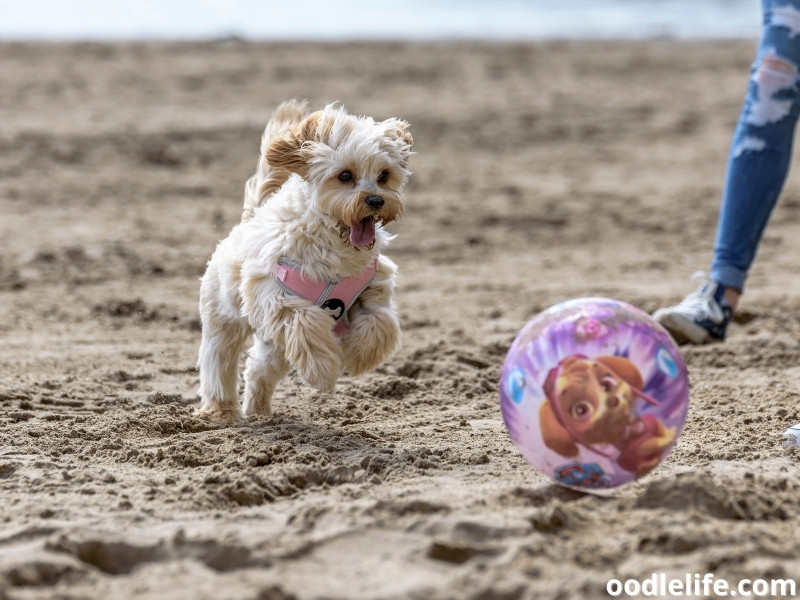
While playing, make sure you teach them simple commands such as “sit,” “stay,” “come.” This initial connection-foundation will help create a loving and loyal relationship between you and your puppy from the get-go.
Remember, puppies are like little sponges absorbing information. Give your puppy a chance to get familiar with your scent and voice, and ensure they feel secure in their new environment.
Rewarding Good Behaviors
Dogs thrive on positive reinforcement. It’s vital to reward their good behaviors so that they know what is expected of them. You can use treats, praise, or even their favorite toys as rewards.
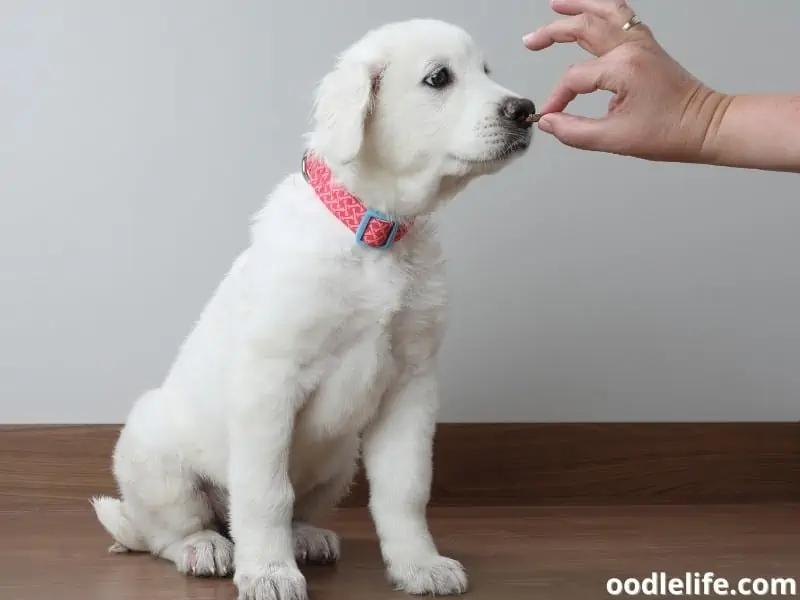
Just make sure the rewards are given in a timely manner in response to the positive behavior. This will help your dog associate the reward with the behavior, and encourage them to repeat it.
For instance, if your dog sits patiently while you prepare their meal, reinforce this good behavior with a praise like “good sit,” followed by a treat. Remember to use a word or phrase that they associate positively with rewards, like “good boy” or “good girl.”
Communicating Effectively with Your Dog
A crucial part of developing a trusting and respectful relationship with your dog is clear and effective communication. Understanding their body language and vocal cues is an essential aspect of this process.
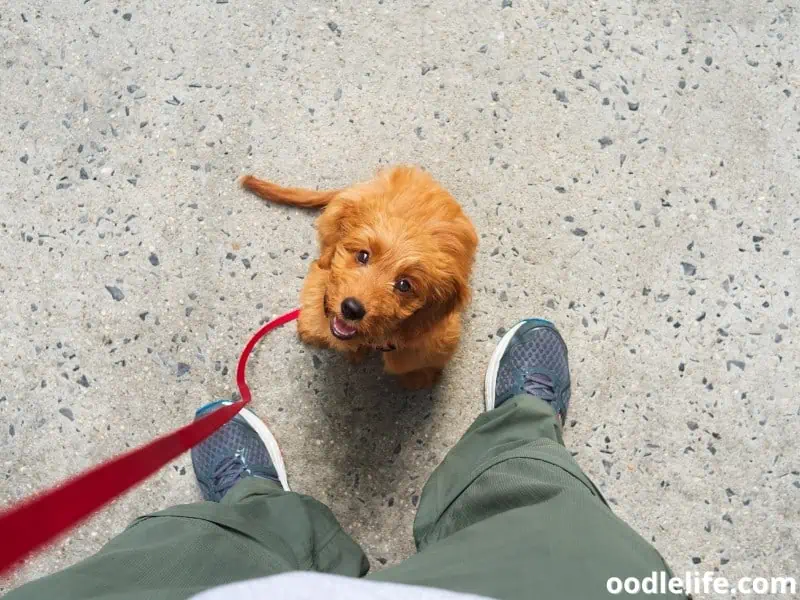
Become a qualified doggy translator by honing your skills to read their signs, such as a wagging tail or playful bark. In return, use simple and clear commands that help them understand what you want from them. Consistency is key—changing commands or not sticking to a routine can confuse your canine companion.
In short, developing a trusting and respectful relationship with your dog takes time, patience, and consistent communication. Focus on building a bond from the start, rewarding good behavior, and learning to communicate with each other. A strong foundation of trust and respect will ensure that your dog feels secure and loves to obey.
Common Signs of Disrespect and How to Address Them
Jumping on Furniture and People
Dogs jumping on furniture or people might just be enthusiastic, but it can also signal a lack of respect for your boundaries. If your fluffy companion is treating your couch like their own personal trampoline, it’s time to teach them some manners.
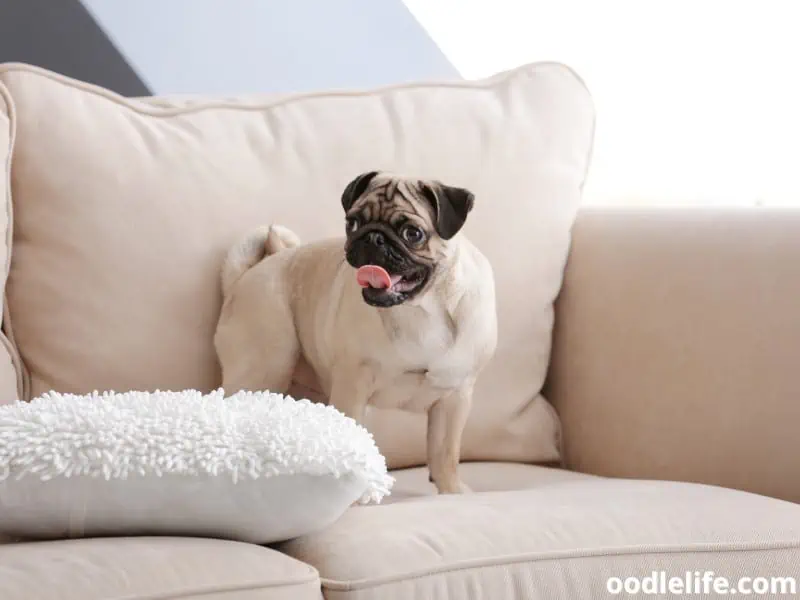
- First, ensure they have a designated spot (like a dog bed) that is their own.
- Next, use positive reinforcement when they stay off the furniture and gentle redirection when they jump up.
A well-timed “No” or “Off” command can help Fido understand what’s expected of them. With patience and consistency, you’ll soon have a pooch that respects both you and your living room setup.
Ignoring Commands
Does your dog suddenly suffer from selective hearing when you give a command? If so, it’s possible they don’t respect your authority. Teaching your dog to listen and follow your commands is crucial for a harmonious household.

- Practice giving commands in a clear, confident voice.
- Reward obedience with treats, praise, or playtime.
Remember, consistency is key – don’t let them get away with ignoring you one moment and expect them to listen the next. Be patient and persistent, and soon enough, your dog will be the envy of the dog park.
Issues with Pecking Order
A dog that challenges the pecking order in the pack may show signs of dominance or disrespect. Identifying this behavior is essential to maintain your status as the respected pack leader.
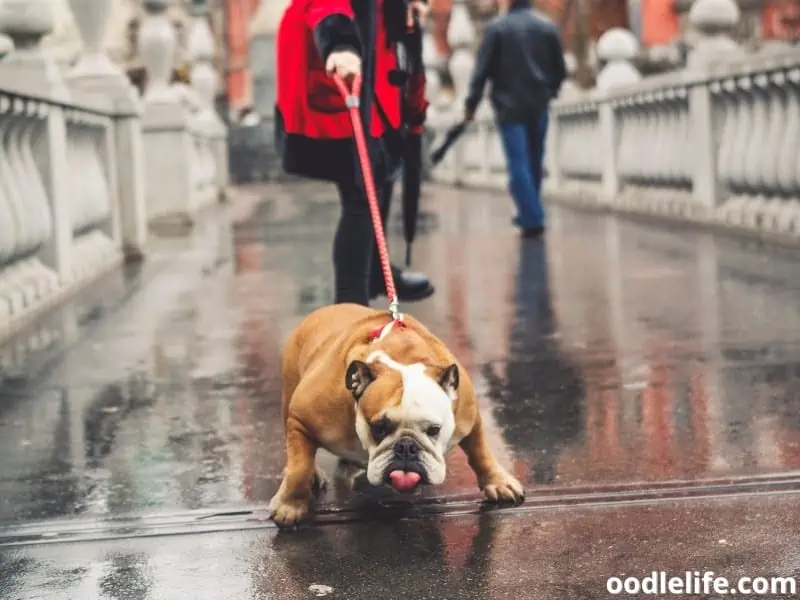
Some examples of pecking order issues are:
- Refusing to let you approach food or toys
- Walking ahead of you or pulling on the leash
- Demanding attention or affection
To address these issues:
- Establish clear boundaries, like staying off the bed or waiting at the door.
- Be consistent with behavioral expectations.
- Implement obedience training to reinforce your authority.
Keep in mind that you’re dealing with a living, breathing, barking bowl of love and instincts. It takes time and continuous effort to earn and maintain your dog’s respect. With a mix of patience, persistence, and an occasional treat or two, you can ensure your dog sees you as the leader of the pack.
You got this!